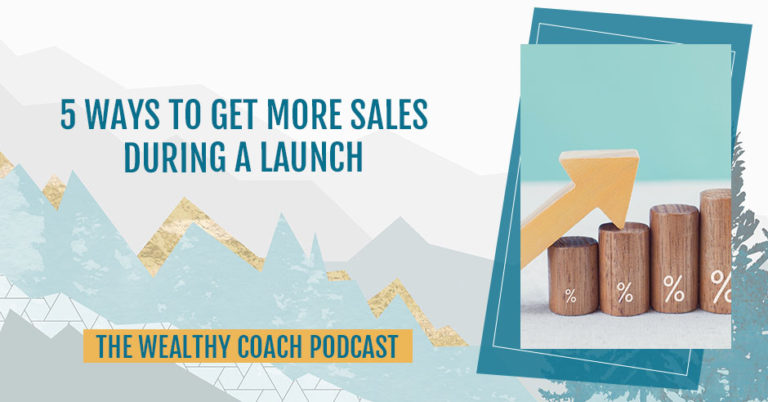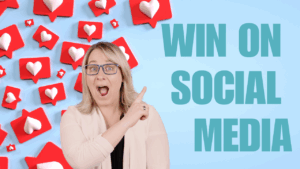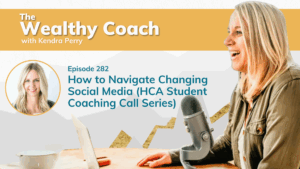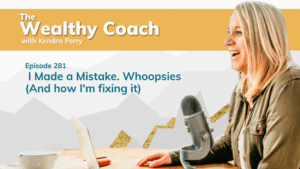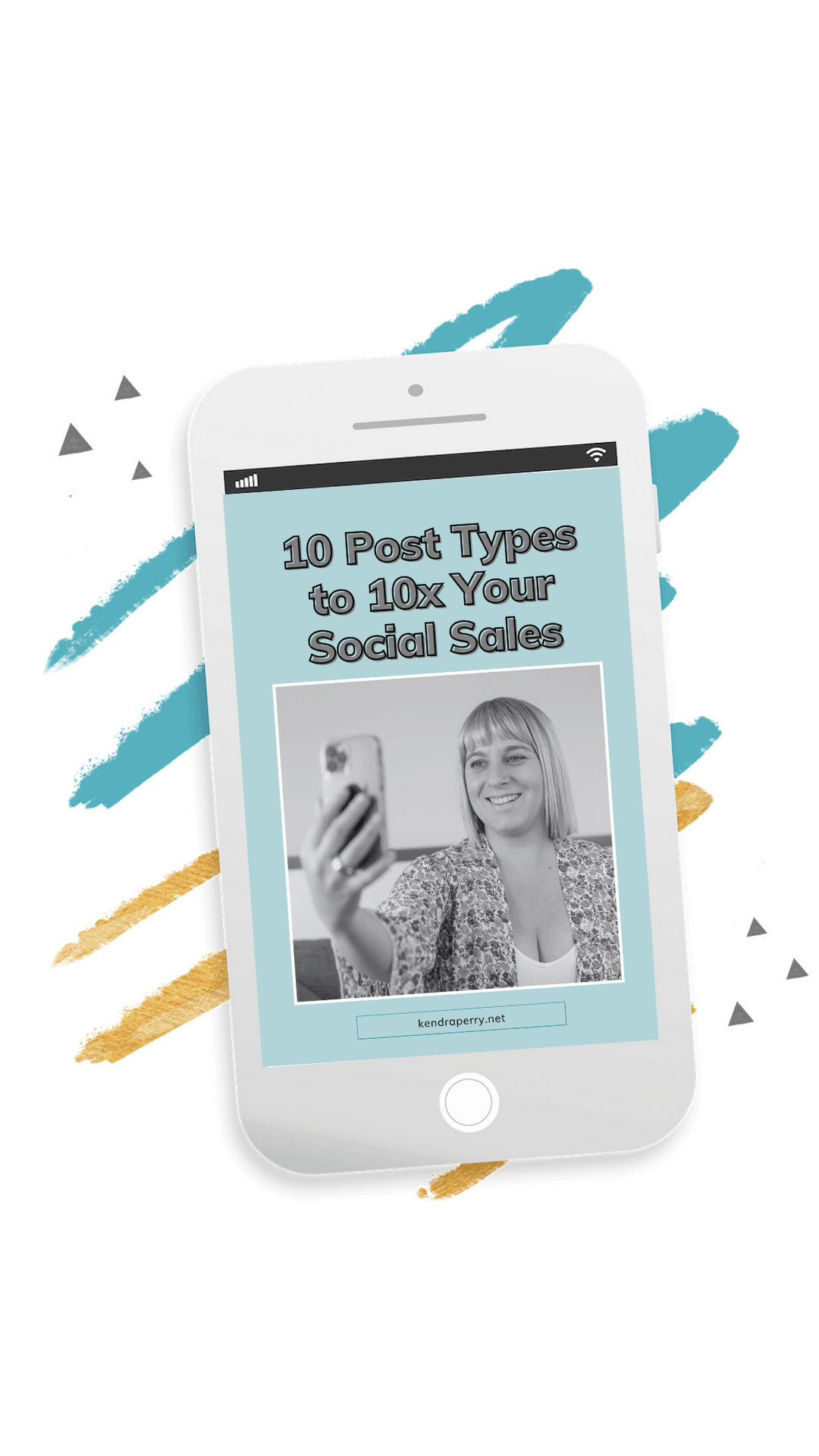How do you get more sales during a launch? The product, service, or program you are offering should be of value to your audience. You have to understand your customers deeply because this will always be the determining factor to your success. If you don’t know how to build a relationship with them and learn their interests and behavior, you cannot sell your product to them. Learn the five ways to get more sales during your business launch! Dive deep into the key factors you need to consider and sales scenarios you can learn from.
—
Listen to the podcast here
5 Ways To Get More Sales During A Launch
In this episode, I want to talk about sales and launching, which I love. I’m going to teach you five ways to get more sales during a launch. This is going to be a launch for something like a group program, online course or maybe a membership program. It’s going to be a one-to-many group program style thing. Let’s dive into it because I have five juicy ways. Some of these things you might not even be thinking about.
The first thing is critical. Talk to your audience. You might be thinking, “What does this have to do with sales?” A big reason why launches don’t get the results you want is that you’re not launching the right product for your audience. This is a big lesson that I learned with my first course launch, which was Hormone Power. I’ve talked about it before on the show.
What I did is I created the course that I wanted to make for my audience without even talking to them at all. I made a lot of assumptions about what they wanted and needed. Ultimately, when I launched it, I didn’t get any of the results that I wanted. It was such a flop. I had no idea I could flop so hard. The reason is I didn’t involve my audience in the creation of that program.
If you are considering launching a course membership, group program or something like that, you want to make sure that you are launching something that your audience wants from you. With Hormone Power, I was launching what they needed and not what they wanted. That is often two entirely separate things. You know what they need but you can’t sell them what they need if they don’t have awareness around it yet. They only know what they want.
A good example of this is if you’re passionate about helping people manage their blood sugar. That’s great. That’s something that people need, but people who need blood sugar balancing don’t know that that’s what they need. There might be a few people who have that awareness because maybe they’ve done some research but a lot of people just know, “I need to lose weight. I need to deal with this prediabetes diagnosis that I got.”
If you’re out there launching a blood sugar balancing program, there’s a good chance that people won’t know that it’s for them because they’re out there looking for a weight loss or diabetes program or something along those lines. It’s knowing what they want versus what they need is important. That’s not to say that you’re not going to help them with blood sugar. You are within the program you offer, but you have to market it in a way that they understand. You can’t sell something to someone they don’t want and don’t think they need.
It’s important that you talk to your audience. This goes beyond the topic of your program and the niche in which you’re targeting. It also speaks to the container of your program. For example, when I launched Hormone Power, I launched it as a DIY course. What my audience wanted from me was more access to me. With this DIY course, all they got was a Facebook group, but they wanted Q&A calls. They wanted more intimacy within a program.
I sent out this big survey and asked them like, “What would you rather pay for? Would you want to do a course, group program, one-on-one or membership?” Overwhelmingly, people were into membership, so I launched a group membership program and it’s sold. People wanted it. I had the biggest launch I’d ever had at the time. I made the most money I’d ever made in that amount of time.
Understand Your Audience
It was a ten-day launch. The reason it’s sold is because I asked them what they wanted, and then I built it for them. You have to understand your audience before you decide to launch any one-to-many programs, courses, group programs, membership or anything like that. You have to understand your ideal client, their awareness level, and the type of container they would feel excited to work with you. That’s number one.
Pre-Launch
Number two is you got to pre-launch like a boss. What is pre-launch? Pre-launch is everything that happens leading up to the actual launch period. The launch period is the open-close cart. The program is available, cart opens. The program is no longer available, the cart closes, or maybe it’s a promo that goes away.
A lot of people put so much focus on this launch phase, and it’s not the most important part. It is important but what is more important is what you do leading up to the launch. Depending on the price point of your program, that pre-launch phase is going to be longer or shorter. For example, if you’re launching something that’s $97, you don’t need much of a pre-launch phase. Maybe you need 2 or 3 weeks.
At the end of April, I launched my live sales workshop, Zero 2 Booked, and pre-launched for about two weeks. If you have something that is maybe $2,000, you’re going to need a longer pre-launch period. Maybe you’re going to need about eight weeks. It depends. The reason why this is so critical is because you need to warm people up and get them used to the idea of this program that you are creating or about to launch.
What a lot of people do is they surprise launch on their audience and that’s not a good thing. There’s this tendency to want to create something in a bubble, tell nobody about it, and then be like, “Surprise. Here’s my thing,” and then expect everyone to be excited about it. They haven’t had the time to integrate what you’re offering and get an idea of if it’s for them.
With the pre-launch, you want to do a few different things. The first thing you want to do is to be completely transparent with what you are creating. You want to show it to them, talk about it, and take them behind the scenes. This is simple to do. Most social media platforms have stories, including TikTok, Instagram, Facebook and Pinterest. LinkedIn got rid of its stories, but most platforms have stories. Stories are very much a behind-the-scenes documentary-style piece of content.

What you can do is you can take videos and photos of yourself working on your program. You can show the slides you’re making, the script you’re preparing, or the sales page. It might seem boring but this all has a purpose because it is showing your audience, “She or he is creating this. That’s interesting. That might be something that I want.” By the time that you launch it, it’s not a surprise. They’re like, “It’s finally here,” and there’s a good chance that some of them have been waiting for it. They’re sitting there with their credit cards, waiting for you to release this program and now they’re ready to buy.
The other thing you want to do is post related content. Let’s say that you want to help women balance their blood sugar, so you’re going to create a weight loss program. You want to make sure that you create content around weight loss, talk about that, and use your program as a possible solution. You can talk about all the myths that people think about losing weight. In the end, you can position your upcoming program as a solution.
You want to constantly be teasing the program. It should make its way into most of the pieces of content that you post. It doesn’t need to be in your face promotional but it can be dropping it in, “This is something that I’m going to be teaching in my upcoming weight loss program,” and then move on. What this does is it warms your audience up and pre-qualifies them for your upcoming launch. This is critical. I’ve seen a lot of people fail with launching who totally neglected the pre-launch phase.
This was also something that I did with Hormone Power. I had no pre-launch. I was so focused on making the program and creating this launch that I wasn’t warming up my audience or even sharing relevant content. This is important because people aren’t ready to buy on a dime. It takes time for people to come around to the idea of working with you and investing in your offer. That’s number two and that’s the pre-launch.
Number three is to create a VIP list. This is something that you also do in the pre-launch phase. You can also call this a waitlist. I like to call it a VIP list and I can’t take credit for that. I took it from Amie Tollefsrud, who does Rebelle Nutrition. She called it a VIP list. I stole it from her and I love it. It’s creating a waitlist for your program.
This is a great call to action to have in your pre-launch because people might be excited to sign up for your program. You want to collect those people’s information and make sure they are on your list so that you can make sure that they receive the promotional emails when you are ready to launch. Another great thing about the VIP list is it also helps you get an idea of who’s interested in the program. It can help how you’re feeling about everything because maybe you get 50 people on a waitlist and you’re like, “I’m so excited for this. People are interested.”
During pre-launch, you are creating this VIP list where you’re collecting their names through a form into your email marketing provider, and then you are offering them a special VIP launch. How I’ve done this in the past is I’ve opened up enrollment 24 hours early to people on the VIP list. I’ve offered them an extra price promotion for 24 hours. It’s a limited-time price promotion.
Let’s say I’m going to open up the cart for everyone on a Wednesday. The VIPs will get offered the course on Tuesday at a discounted rate that will go away after those 24 hours. That’s a great way to incentivize people to go on the VIP list because some people will be like, “Why would I want to be on the VIP list? I’m following your content and I see it.” You can tell them, “Hop on the VIP list if you’re interested because I’m going to be offering price promotions and bonuses that I am not going to be offering anywhere else.” When you do the VIP launch, you were being truthful in that.
What I do is open up the cart 24 hours early. I give them a 24-hour timeline to access that bonus, and then the following day, the cart opens to everyone else. This is a good way to not only incentivize the hottest people or the hottest leads but also get some sales early on in a launch. What’s typically going to happen in a launch is most of the sales are going to come in at the end. That can be hard on your mental health. I’m speaking from experience here.
This happens with every single one of my launches. We get a few sales at the beginning, then we have crickets. I go to the bad place. I’m like, “No one is going to sign up. Nobody likes me. Nobody wants to be in my program.” I’m in the fetal position crying and then all of a sudden, all the sales come in in the last two days. I’m like, “Everything is fine.” I then look like a crazy person. It happens to me every single time. The VIP launch is helpful because it can get you a few sales early on. That can help you survive mentally throughout the rest of your launch.
VIP List
Another way you can use the VIP list is to run a VIP-specific webinar. If you are launching with webinars, what you can do is you can have a special webinar for the VIP list only. I have not done this personally but I’ve seen people in my mastermind program do this and I see why it would work. They run a special webinar for the VIP list and one for everyone else the following day.
I’ve always not done this. I’ve always done only email marketing. With something that’s a little bit higher ticket or has a little bit of a higher price point, this would be good because sometimes people need a presentation in order to feel comfortable buying. If I’m ever to live launch a new program in the future, I will try this strategy. That’s number three and that’s to create your VIP list.
Urgency
Number four is to use urgency or scarcity. What is the difference between these two? Urgency means that something is going to go away. It might be that time is going to run out or bonuses are going to go away. Scarcity means that there are only a certain number of spots. You need either one of these or even both for every single launch.
If you don’t give people deadlines and there’s no pressure for people to take action, they don’t. It’s human psychology. We always need a little bit of pressure to take action. I appreciate it because otherwise, I’m going to hem and haw about something forever until I finally make a decision, or I don’t make a decision at all.

The mastermind program that I’m in is a higher ticket program, so they didn’t have an urgency or scarcity factor. It is more typical for the price point of this program. I signed up for my first sales call in April of 2021, and I finally signed up in January of 2022. I’m happy with the time at which I have signed up for the program. If I had a little bit of pressure, I would have signed up sooner, and that probably would have been good for me. You have to create one or the other.
If you’re running a live group program or live course, meaning that it starts on a certain date and ends on a certain date, you have urgency. That is a powerful piece of urgency because it’s real urgency. The cart closes and you can’t get in anymore. That is enough for people to want to take action and it’s pretty amazing. People will go through an entire launch. They will miss the VIP bonus, the fast action bonus and all the bonuses, and then they will sign up an hour before the deadline simply because there is a deadline. That is urgency.
Scarcity means that there are limited spots. You usually have both urgency and scarcity. Let’s say you have a program and there are only ten spots. That would be scarcity. Once the spots are gone, you can’t accommodate any more people. That would make someone take action. That being said, you probably don’t want the deadline to go on forever. You still want to throw some urgency in there and say, “We have ten spots available. When they’re gone, they’re gone, and the cart is open until this date.” You need one of those two things.
What happens if you were launching an evergreen program? A good example is the Health Coach Accelerator. It is an evergreen program, meaning that you can enroll whenever you want. It is always open for you to enroll, but I still live to launch it. How do I create urgency? I create a price promo. The program is $1,997, but when I live launch, I always offer a price promo. I’ll offer maybe $300 off or something like that for a limited amount of time. I also might offer special bonuses for a limited amount of time.
That will make people take action. You do need something that’s going away. It doesn’t need to be a price promotion. You don’t need to discount it if you don’t want to, but there should be some bonus or something juicy that they want, and it goes away if they don’t enroll for a certain amount of time. If you don’t have urgency or scarcity in a launch, you’re not going to make the sales.
Some people don’t like this. They’re like, “I don’t like FOMO marketing.” I hear you but it’s basic human psychology. People need the pressure to buy. Think of how often you need the pressure to buy. Maybe you go and find this product online. You’ve been thinking and humming and hawing about it for a while and then suddenly, they’re having a three-day sale. If you want that product, you’re going to buy it right then. You’re not going to wait because you’re like, “I want this sale price.” Every single business has limited sales. We’re not going to have sales all the time. Target doesn’t have sales all the time. They’re limited. That’s urgency or scarcity.
The fifth one is a juicy one. It is to send out more emails to those who have clicked the sales page but didn’t buy than the people who haven’t. When you send out an email marketing campaign, there are going to be people who click on the link to the sales page but they don’t buy. There are also going to be people who don’t click on the sales page. Can you guess which is the hotter lead? I hope you know. It is the person who has clicked on the sales page.
Those are your fence-sitters. Those are the people who are interested but there is something holding them back from buying. Rather than hammer everyone with a ton of emails, send out a higher frequency of emails to the fence-sitters. They usually just need something to push them off the fence, whether it’s an objection they need handling or they need their money objection handling. Maybe it’s a time thing. Maybe it’s, “I’m not sure if this is going to work for me.” They need more emails.
You can do this with any email marketing provider in ConvertKit, which is the program that I use. You can tag someone who clicks a link and exclude the purchase tag. It means that people who purchased won’t get the email. It will only be the people who clicked on the link but didn’t purchase. If I send out two emails every day of my launch to everyone, what that means is the fence-sitters are going to get 3 or 4 emails. I know that’s a lot of emails. Oftentimes, people are like, “I don’t want to bug people.” I’m giving you permission to bug people.
Not everyone is going to see all the emails, and people need a lot of reminders. People appreciate it. If they’re still on your list and they haven’t unsubscribed, they are interested. They need reminders. It’s okay to send out more emails than you are comfortable sending out. You don’t need to go crazy but always send out an extra email more than your comfort zone. It will always serve you well. I always send out more emails. That’s how I push people off the fence.
There’s one email and I’ve talked about this in a previous episode. This email continues to work super well for me and it’s the fastest email to write. It’s an email that has a question mark in the subject line. That’s it. In the email, it says, “What’s holding you back from signing up for Health Coach Accelerator? Reply to this email and let’s chat.” I always get a ton of responses for that email.
What it allows me to do is to go back and forth and email these people and handle those objections. Oftentimes, these people will end up buying. We will both determine that “I don’t think you’re a fit for this program.” I always like to be transparent with who I think is a fit and who I don’t think is a fit. That is a powerful email because sometimes people are not sure. They don’t know who’s on the other end of the email, so I’m saying, “It’s Kendra. What’s holding you back? Let’s chat.” I can’t tell you how powerful that email has been. That’s number five.
Let’s do a quick review of these five tips. I thought of a bonus tip that I want to give you as well. 1) Talk to your audience. This research phase is important. 2) Dive into your pre-launch. Valuable content, behind the scenes, and don’t surprise launch on your audience. 3) Create a VIP list and have a special VIP launch. 4) Always bring in some sort of urgency or scarcity into your launch. 5) Send out more emails to the fence-sitters than the non-fence sitters. What you’ll notice is a lot of the tips that I gave you happen in the pre-launch phase. I only gave you 2 out of 5 tips that happened in that open cart period, 1, 2 and 3 were all about pre-launch. That highlights how important pre-launch is.
The sixth tip that I just came up with now that would be valuable to you is to offer a down-sell. This is a little bit more of an advanced strategy. This will only work if you have multiple products and lower ticket products. What you can do is send out an email to everyone who didn’t buy the day after a launch and say, “I noticed you didn’t buy. No worries, maybe this wasn’t the product or program for you. I have this other program. Maybe you would be interested in that.” It should be something that is at a significantly lower price point.
As an example, with Health Coach Accelerator, what I might do is offer them my niche workshop or my Price for Profit Calculator. It’s something that is around $97 or maybe even less than that and offer it as, “You didn’t want that. Maybe that wasn’t exactly what you wanted. Maybe it was too much or too expensive, but you might want this thing instead.” It’s a great way to bring in a few extra sales at the end and also a great strategy for warming up those people.

Those people who weren’t quite ready to buy the bigger higher ticket program, if they buy the lower ticket program, they’re going to consume that, see how awesome you are, and then hopefully be ready the next time when you come to launch that higher ticket program. I hope you found these tips helpful. Everything I taught you is exactly what I teach inside my program, Group Program Academy.
Group Program Academy is for coaches who want to turn their one-on-one services into a profitable group program. Inside the Group Program Academy, what we do is help you create a transformational group program. We structure it, build the program, and then I help you launch it using email marketing and social media. This is perfect for anyone who has not launched a group program before, and this will be your first group program. If you’ve launched a group program in the past and did not get results, this will also be a good fit for you. If you already have a group coaching program and it’s doing pretty well but you’re looking to increase sales, then this program is not for you.
I am relaunching Group Program Academy as a self-study program which means it’s completely DIY. Do it at your own pace. What that allowed me to do was bring down the price point because that’s what a lot of people were asking me for. If you are interested in learning more about how you can turn your one-on-one services into a group coaching program, I have a free masterclass. If you want to see that masterclass and register, you can go to KendraPerry.net/Episode118.
If you want to learn more about group coaching programs and whether it’s right for your business, I go over everything in that training. I hope you enjoyed this episode. If you love what I share in this show and you want to support the show, the most amazing thing you can do is give me a five-star review on iTunes. It’s super quick. It will only take two minutes. It helps me in more ways than you will ever know. Thank you again for tuning in. I will see you next time where I help you become wealthy AF.
Important Links
- Zero 2 Booked
- ConvertKit
- Rebelle Nutrition
- Health Coach Accelerator
- Group Program Academy
- KendraPerry.net/Episode118
- iTunes – The Wealthy Coach
- KendraPerry.net/group-program-training – Free Masterclass: How to Turn Your 1:1 Services into a Profitable Group Coaching Program

